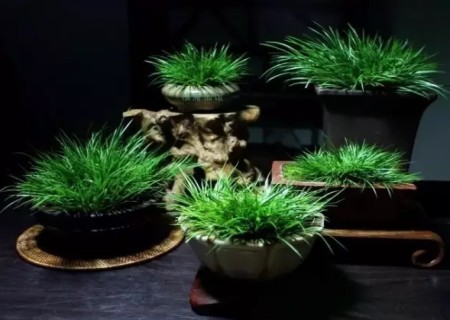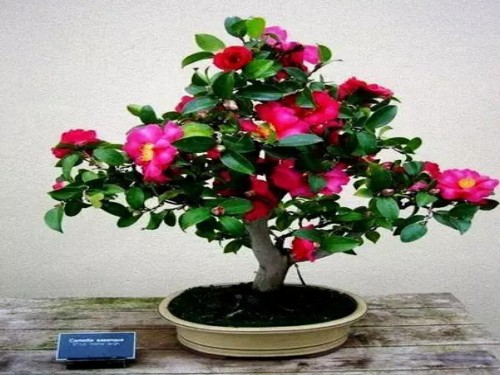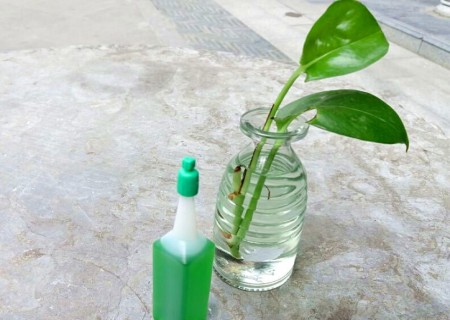What kind of soil is used to grow Acorus calamus-- Analysis of Acorus calamus Culture soil
Acorus calamus is one of the traditional flowers in China, which is called "four elegance of flowers and plants" with orchids, daffodils and chrysanthemum. In recent years, it has become a hot spot in the flower market and gradually become a new favorite of consumers. Calamus basin play has been widely spread since the Song Dynasty. Such as Su Shi's poem: "rotten spot gravel raises calamus, a spoonful of clear spring and half stone pellet"; Lu you's poem: "Today's brook comfort place, looking for white stone to raise calamus". This kind of poetry is not uncommon.
Calamus as a basin play, even from the Song Dynasty, but also has a history of thousands of years. The ancients did not have red jade fairy soil, no peat jade fertilizer, still put a clump of mountain stream weeds, raised green leaves velvet, soft as silk! What kind of plant material did the ancients use to cultivate calamus?

What kind of soil is used to grow and raise calamus? Pu Bubilan, orchid is stubborn, less than a trace of cold face to you, such as summer is not thoughtful, there will be no flowers in spring. And Pu is different, only need shallow water and cool wind. As for the thick or thin soil, it has nothing to do with it, so that you can see it whenever you face it.
Acorus calamus does not choose soil, generally choose loose and breathable, good water retention soil.
1. Match the text (grain) stone
The role of aragonite in the cultivation of calamus is not to attach calamus to the stone to grow, but to make landscaping for calamus. A simple calamus is raised in the basin, from the perspective of appreciation, it is too single and "lonely", and so is the ancient aesthetics in this respect. Therefore, it is particularly important and natural to choose textured or shaped stones as the "companion" of calamus. After matching "Beautiful Stone" with Acorus calamus, it improves the appreciation of Acorus calamus, which is also in line with the desk of the study room and is clear for elegant play.
Acorus calamus coexisted with stone in nature. When the ancients chose nature, the first thing that came to mind was stone. There are various ways for literati of all ages to play with Acorus calamus. The Stone Spectrum of Yunlin was written in Shaoxing in the Southern Song Dynasty. Xi Sun in the article refers to calamus. It can be seen that at this time the ancients had discovered Kunshi, and combined with the popular stone basin at that time, planted calamus in the strange place of Kunshi. This way of planting calamus with Kun stone goes further than Su Dongpo's "take it with stone" or "between with stone", and become the beginning of the real stone-attached game.
2. Tile chips
Calamus Xi Qing spring water, that is, like a relatively clear water environment. From this aspect, we can also infer that calamus does not like the more fertile "soil environment". In Wang Xiangjin's "Erru Pavilion Group Fang Spectrum", calamus is described as "species to clear spring gu stone, congested to accumulate years in the gully tile, then the leaves are fine." The tile itself is made of soil and comes from tiles. After a long period of wind and sun, Rain Water has good water retention and air permeability. At the same time, tile chips have certain nutrients which are beneficial to plant growth, so tile chips are also an ideal cultivation substrate for pot culture of Acorus calamus.
With regard to the use of Wamo, Wang Xiangjin of the Ming Dynasty said in more detail that the process of making and using Wamo was attached: first, the hard tiles were broken, then the particles that were too thick and too fine were removed, and the remaining moderate-sized tiles were used to support the roots of Acorus calamus. Then dense seed. With the combination of theory and practice, the ancients' practical ability is not weak!
3. Sand
The use of sand to cultivate calamus is mainly used in the process of cultivating calamus seedlings. The ancient literati thought that it was an ideal choice as the soil matrix of calamus seedlings. Of course, we should choose the sand selectively. The sand with larger particles is selected to be placed at the basin floor as the matrix of the basin floor, which is beneficial to the discharge of basin water. Then select the finer sand and lay it flat with the basin surface.
As the calamus "see the stone is fine, see the soil is thick", so the ancients in order to make the calamus fine and lovely, with stone, tile, is not willing to use garden soil. Sand is a kind of soil with many fine stone grains, which perfectly solves the problem of stone and soil. The so-called Hengyunshan sand should be similar to today's mountain mud and gravel, which not only preserves water and permeability, but also takes into account soil fertility. It is an ideal plant material for Acorus calamus, which is more balanced than this kind of pure inorganic plant material. So calamus can naturally flourish under the condition of "slightly sprinkling water"!
4. Charcoal
Planting cattail with charcoal can be regarded as a new trick after the ancients found the ideal plant material for calamus. After charcoal burning, the structure is loose, insect-free and sterile, which is very suitable for the growth of calamus. Chen Mengzi in the Qing Dynasty was even more ingenious. He chewed rice and calamus seeds together, sprayed them on hot charcoal, and made calamus seedbeds with hot charcoal. This kind of calamus was born very fine and did not need to be pruned many times.
The plant materials of Acorus calamus should take into account several factors, such as looseness and ventilation, water retention and permeability, moderate fertility, and aseptic aseptic. the ancients basically noticed these factors, and they used tiles and charcoal that were common around them, but they clicked casually, and they had to marvel at the wisdom of the ancients.
Editor's words:
Cattail has bitter fragrance, I always say that is the smell of a man, broken leaves, damage to the tip you can smell the real taste. Thin leaves are stubborn and firm, with leaves but no need to wait for flowers, flowers do not need to seek fruit, can also grow in the extreme predicament, do not be arrogant, do not complain, this is the reason why I love pu.
Time: 2019-05-22 Click:
- Prev

New year and Spring Festival are suitable for bonsai at home.
What kind of plants are suitable for the Spring Festival at home? On the occasion of the New year, choose and cultivate several pots of timely flowers and plants to be put into the room, which can not only beautify the environment, but also add a joyous atmosphere to the festival. This paper introduces several kinds of timely flowers suitable for decoration during the Spring Festival. Cyclamen, commonly known as radish begonia, rabbit flower, rabbit ear flower
- Next

Hydroponic Plants-How to Make Hydroponic Nutrient Solution
Hydroponics is the use of modern biological engineering technology, the use of physical, chemical, biological engineering means, the common plants, flowers domesticated. Because it is convenient to carry and take care of, cheap, clean, healthy growth of flowers and leaves, it can achieve the picture of fish and flowers enjoying together. Hydroponics is still in its infancy in China
Related
- Fuxing push coffee new agricultural production and marketing class: lack of small-scale processing plants
- Jujube rice field leisure farm deep ploughing Yilan for five years to create a space for organic food and play
- Nongyu Farm-A trial of organic papaya for brave women with advanced technology
- Four points for attention in the prevention and control of diseases and insect pests of edible fungi
- How to add nutrient solution to Edible Fungi
- Is there any good way to control edible fungus mites?
- Open Inoculation Technology of Edible Fungi
- Is there any clever way to use fertilizer for edible fungus in winter?
- What agents are used to kill the pathogens of edible fungi in the mushroom shed?
- Rapid drying of Edible Fungi

